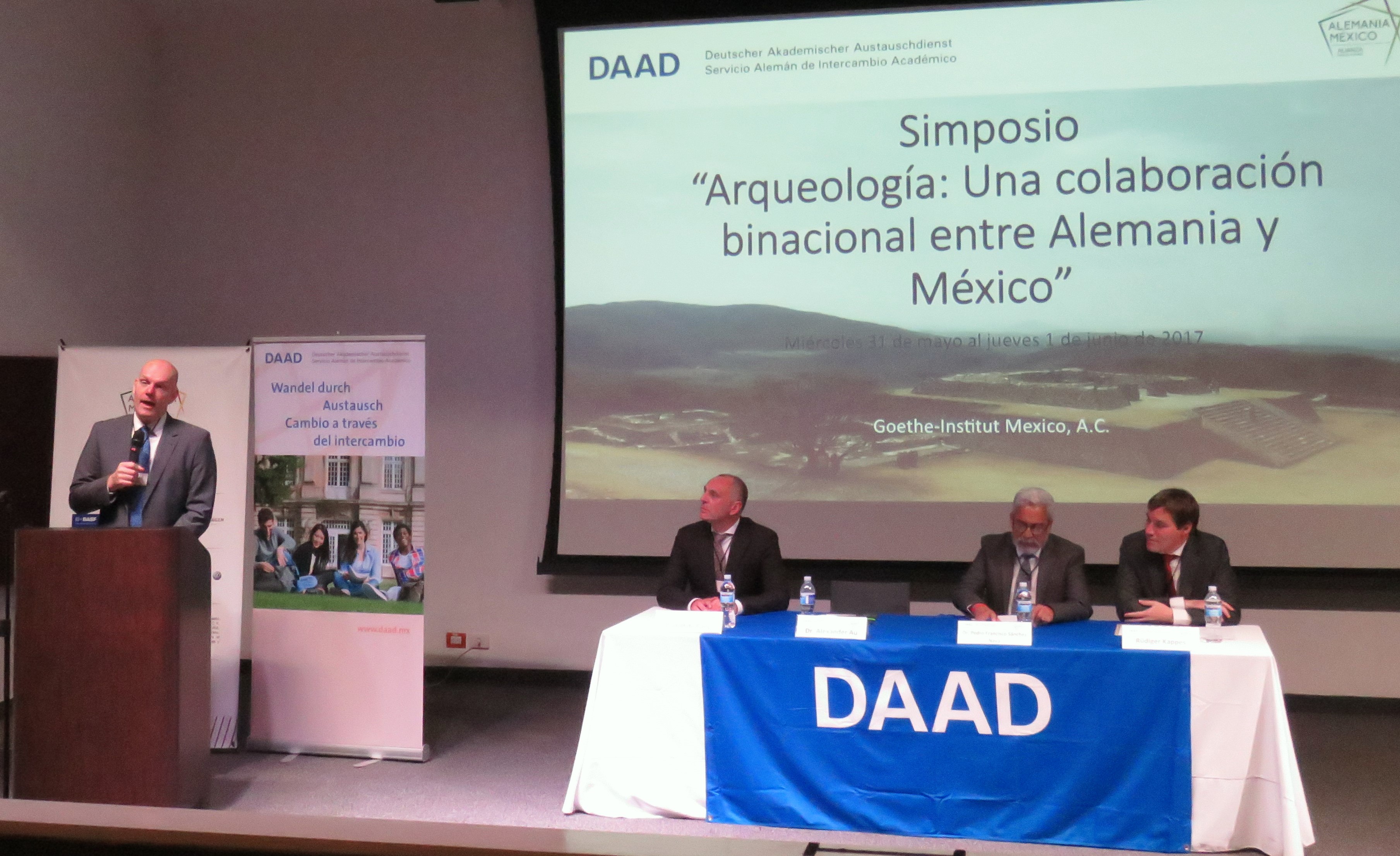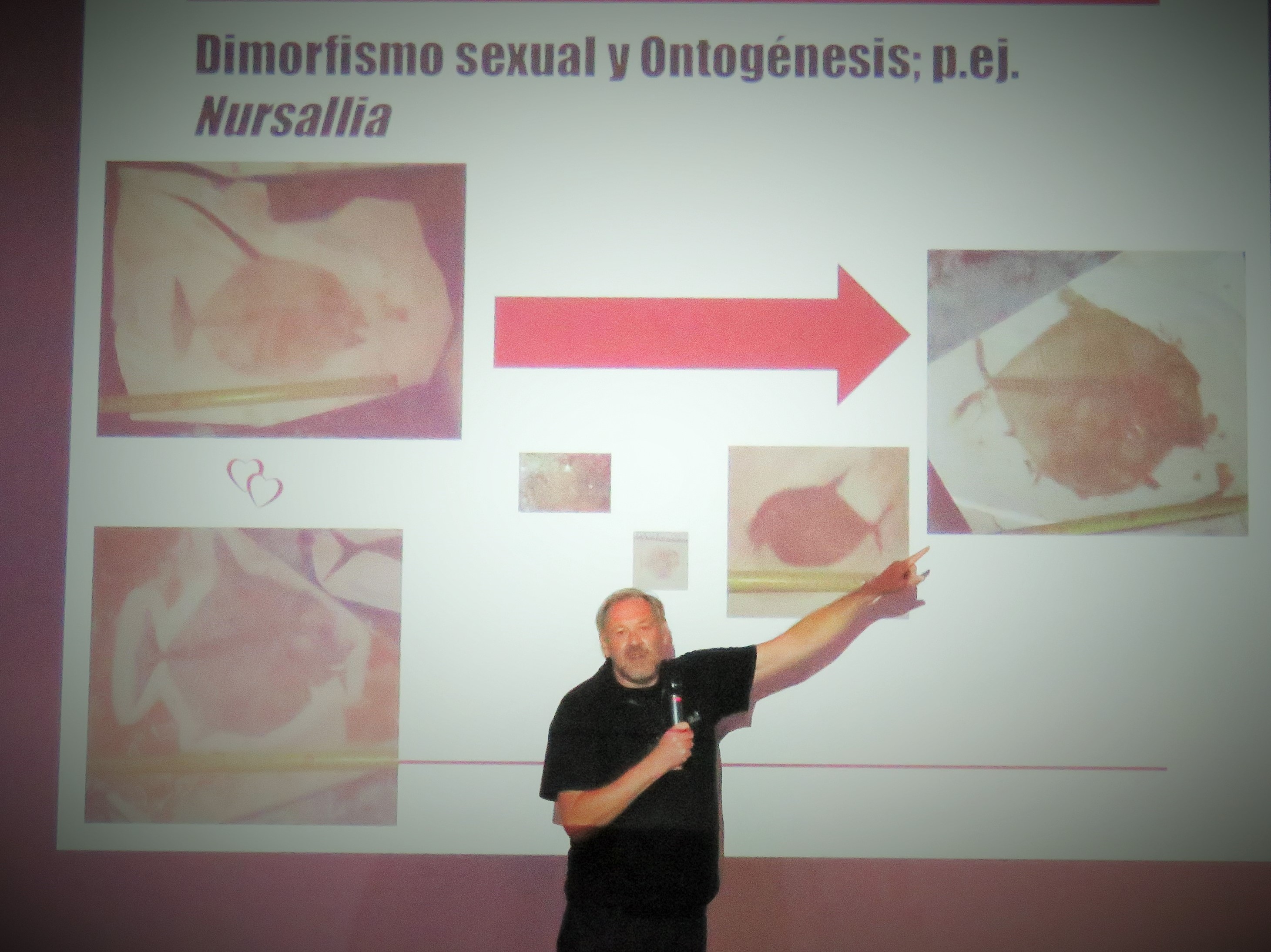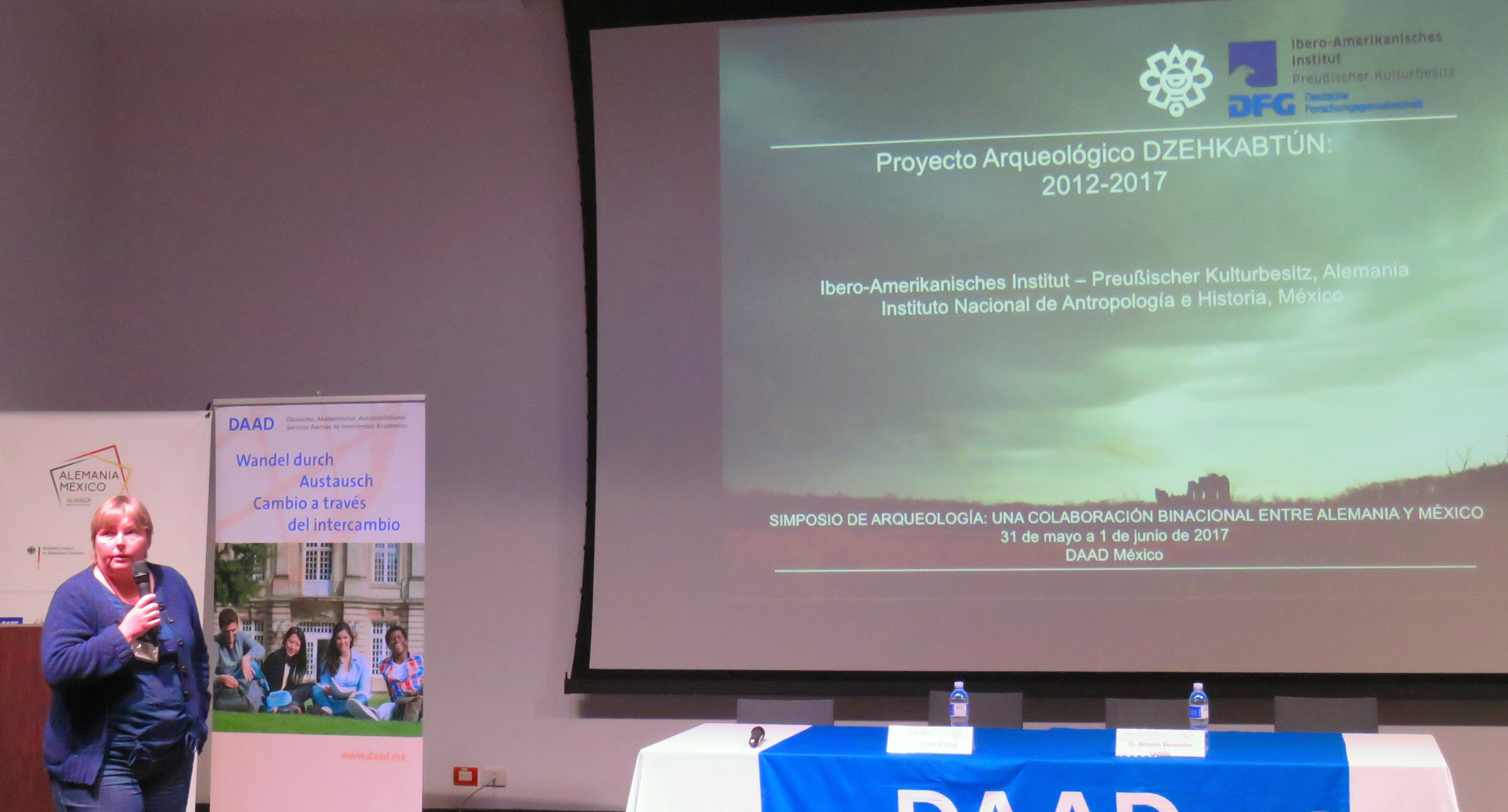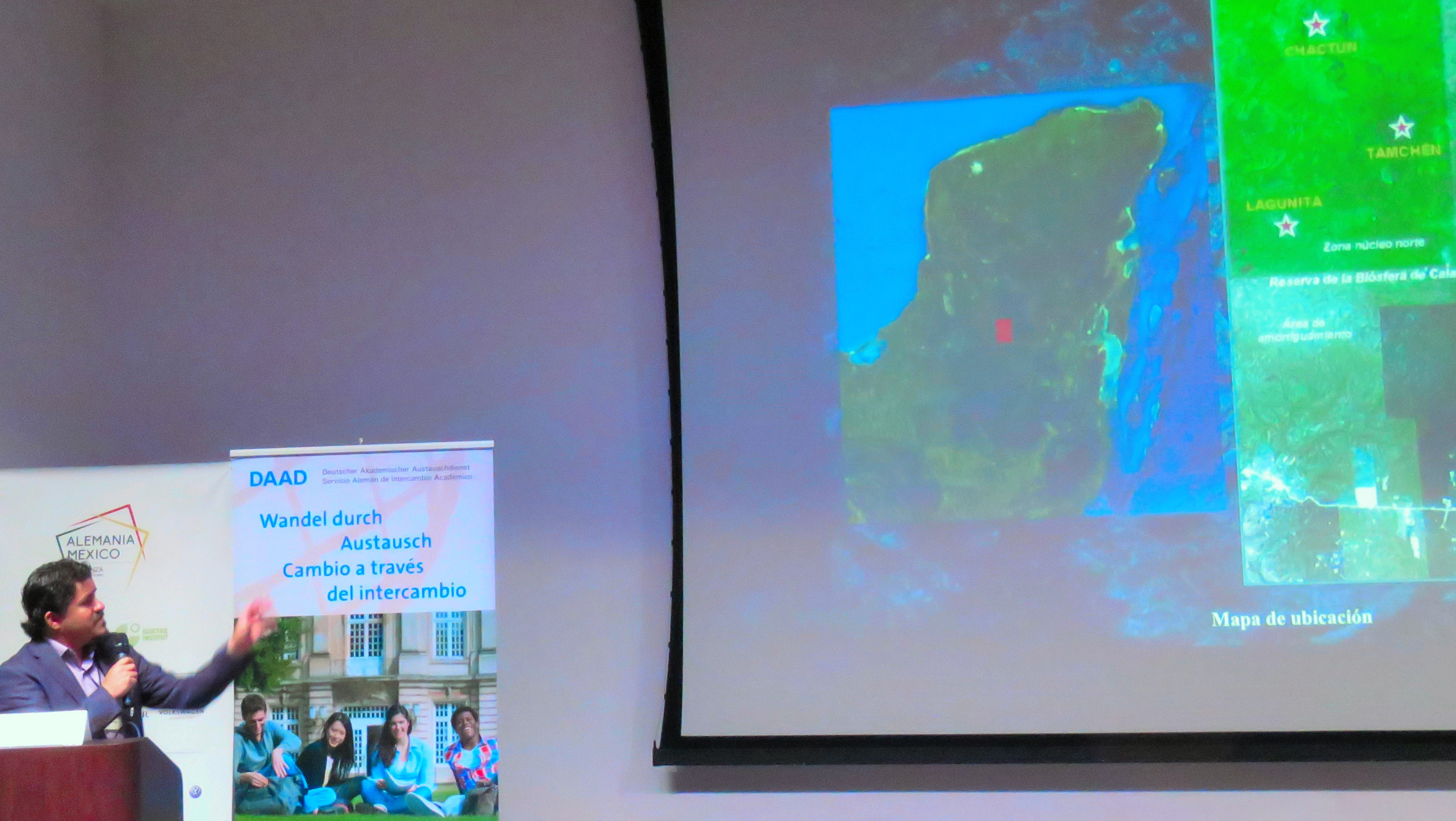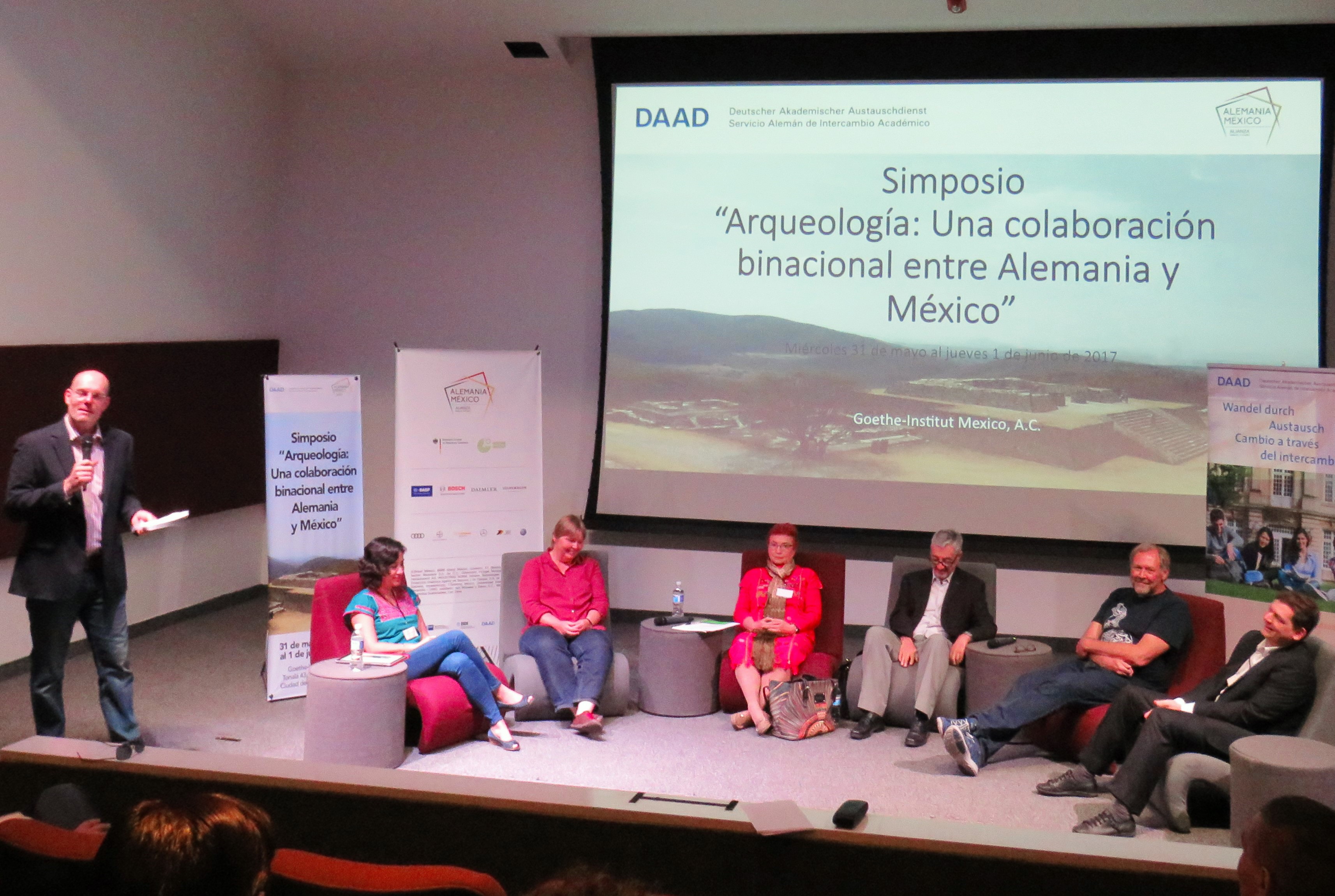Archaeological Research – the Results of the Successful German-Mexican Collaboration
(26.06.17) As part of the year of Germany in Mexico, the regional DAAD branch organised a symposium on the subject of archaeology in the Goethe-Institut in Mexico City. This country was home to some of the world's oldest and most highly developed civilisations, and is also the site of the 66 million-year-old meteor crater thought to be responsible for the extinction of the dinosaurs. It therefore comes as no surprise that Mexico offers a diverse and very interesting environment for archaeological research.
Welcome speech by Alexander Au, Manager of the DAAD branch in Mexico City, at the opening of the symposium
© DFG
The two-day event took place on 31 May and 1 June and provided a forum for the presentation of ongoing bilateral projects in the fields of archaeology and palaeontology, as well as for exchanges of experience, suggestions and ideas for further development of international cooperation.
Prof. Dr. Wolfgang Stinnesbeck from Heidelberg University particularly emphasised the huge potential of palaeontological research and the results of the long-term collaboration between the two countries. In his speech, he talked about the planning and foundation of the Museo del Desierto, and geoarchaeological, historic and palaeontological aspects of the desert in the Saltillo region in the state of Coahuila. The museum was opened in 1999, attracts some 280,000 visitors each year and illustrates the effects of research works on the local economy and society.
Dr. Iken Paap from the Ibero-American Institute (IAI) in Berlin presented her DFG-funded project looking at socio-political contexts in the transition from the late classic to the epiclassic age (850–1100 AD) in the Campeche region. Despite unfavourable conditions - for example local livestock breeding, theft of finds and use of material for the construction of a motorway - Dr. Paap and her cooperation partner Prof. Dr. Antonio Benavides Castillo from the National Institute of Anthropology and History (INAH) in Mexico presented positive results, including the drawing up of a site plan and the discovery of ceramic finds and graves.
Dr. Peter Conrad Kröfges, a German researcher at the Autonomous University of San Luis Potosí, and Dr. Octavio Quetzacóatl Esparza Olguín from the Institute of Philological Research of the National Autonomous University of Mexico (UNAM) also gave extremely interesting presentations that generated many questions from the audience.
The second day of the symposium was devoted to a panel discussion. Chaired by Prof. Dr. Ana Luisa Izquierdo y de la Cueva, a philologist at the UNAM, the challenges and interests of the cooperation were discussed with the audience. A productive exchange of opinions, experience and suggestions took place, with Prof. Dr. Stinnesbeck's point about potential from the first day being clearly highlighted again. In contrast to the periods under consideration, extending over thousands of years or even an entire era, the time at hand did not allow for a detailed discussion encompassing all aspects of the cooperation.
